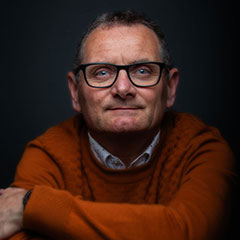
Transcribed by Otter
Danny de Hek 0:16
Yeah, so welcome along. Helen Oakes and I’m Danny de Hek. If you’re interested. Now this is Helen’s first podcast of her own, we’re going to set up Helen. Helen is actually a photographer. She’s also my partner. And since COVID we’ve been looking for, to market ourselves in different wonderful ways. So as you can imagine… a photographer is having a great time at the moment because we can’t get out in public so much. So why don’t you first tell me how you actually first got involved in photography, and why you love doing photography.
Helen Oakes 0:52
Okay, I first got involved probably in my 20s, I would say, even a, well actually even a little bit in my teens, I quite liked photography and I had a tiny little camera, it was like a little flip-out camera an Instamax camera. And I got that as a birthday present one time, and I thought that was the bees knees and I went around taking photos. It’s the sort of camera that you put these flashes, big long…um there’s about 12 flashes that you stick on the top of it.
Danny de Hek 1:20
Oh yeah, they look like the blue bottles on the beach.
Helen Oakes 1:24
Yeah, so you put those on the top of the camera, and you take photos. And it was really cool. I thought it was really fun, really cool. And then as I got older, I used to watch my brother taking photos and he had a SLR, which was a Pentax camera and I thought Wow, that looks really cool, professional looking camera. So then I decided I’d get myself a camera. So I got myself a Sigma camera, no, Minolta camera with a Sigma lens on it. And it had all the manual dials on it. And I was like, Oh, this looks a bit tricky, but I’ll have a go. And I used to always put it on one setting and I thought if I put it on this setting I’m bound to get good photos. So I’d always put it on one setting. And then I gradually started playing around a bit more with it and started learning more. And then I used to look at my brother’s photos and go, Wow, they’re really amazing. I want to get further in the photography field. Yeah.
Danny de Hek 2:16
So what type of photography would you say is your genre, as the say?
Helen Oakes 2:20
My genre would be people photography. I love taking photos of people. I love taking photos of sports people.
Danny de Hek 2:27
Right, have you done any events that come to mind that you’re really proud of?
Helen Oakes 2:30
Yeah, yeah, I love doing gymnastic events like National Gymnastic competitions, right. And I love doing just portraits of people, for workshoots and also for sport shoots.
Danny de Hek 2:46
So I mean, photography has taken a bit of a twist over the last few years because I know I’m quite like I used to call myself a professional photographer and then you explained my type of photography that I am but I think because most people have a camera in their pocket, they can pull it out they can take photos. Ah how do you actually compete when you’re at a gymnastic event and there’s mom and dad taking photos with their friend or their daughter or their friends children? Yeah, is that something that makes you industry hard.
Helen Oakes 3:12
It does because everybody has a camera and everybody has a cell phone. And a cell phone has an amazing camera on it. I mean some of the cell phones now I think they have 40 megapixels. So you don’t really compete with it, but you offer a service that is like a one on one where you can get much better photos. And like for example in gymnastics, I would, I’m right there I’m on the floor whereas people are sitting in the stands and they can’t get as good photos because they’re not as close so, what I’m offering is the close up the, the in the action shot.
Danny de Hek 3:49
And you got the good gear as well. And also your experience because used to be a gymnast teacher, yeah. So you know, when to take the photo at the right time. And it also how, I mean, you know because I’ve seen your photos and I’m amazed. But I think the camera you’ve got at the moment you said it could take like 16 photos a second.
Helen Oakes 4:06
16 frames a second, it’s a Canon 1 dx mark two and it’s, it’s the big daddy of sports cameras. That’s right.
Danny de Hek 4:14
Yeah, that’s quite a hard case in a way because theoretically 16 photos in a second you just hold it, just hold the button down for a second, and take the photos.
Helen Oakes 4:21
You can and everybody thinks well if it’s got that many frames a second you’re bound to get a good photo. But you can still mess it up I guess having the wrong settings or not not capturing that mineute piece of action that you want to get so it’s not a failsafe, you’ve got to as you say, you’ve got to know the sport. You’ve got to know what’s going to happen next and you’ve got to be able to read the action I guess.
Danny de Hek 4:44
I know you’ve been going to different events, gymnast events, the lightnings always been a problem. And in Christchurch, New Zealand, obviously outside. They’ve got a new gym that’s got pretty good lighting or is it? They’ve done good this time?
Helen Oakes 4:56
Oh, well, it’s really good. We’ve got some good lights, this time. The lights in the old gym used to flicker, I think there were a fluorescent lights, and you would get colour casts you’d get pink and you’d get green and yellow. And especially at night it was so dark. So I guess when you’re looking at the parent taking the photo versus me taking the photo, I can edit the photo afterwards and get some decent shots. And a parent photo would probably have pretty bad lighting, right?
Danny de Hek 5:24
So I’ve been looking at your website and I can obviously see, so if you go to Mode de vie, what what does that mean?
Helen Oakes 5:29
Mode de vie means way of life in French.
Danny de Hek 5:32
Excellent. So I’ve noticed you’ve got galleries there, I can see you’ve got different types of photography, I’ve been encouraging, because I’ve been doing a bit of website marketing for quite a few years. And I’ve now see that you’ve got aviation photography, commercial photography, lifestyle, sports and events, I assume and sportstraits. And you’ve got little packages that people can get, sort of get an indication that it doesn’t have to cost the earth. But obviously, you still have got your professional photos but one thing I really, when I looked at your website, I actually really love looking at your galleries because I can certainly see, you’ve taken quite a few photos of different things, different scenarios. Suppose being a photographer marketing yourself is getting your genre or getting your message out there. What type of photography you’re good at, or the gear that you’ve got yourself set up for. Yeah, because I know when I’ve seen you taking photos, especially with the lifestyle stuff, and we’ve gone to somebodies premises and you’ve spent an hour setting up lights just to get a couple of photos. From the customer’s perspective, they just say, look, I just want a couple of photos. Yeah, but you often take 30 or 40 photos. Yeah. And you also get the lighting, right.
Helen Oakes 6:37
It’s easier said than done. Yeah, often people will say I just want one or two photos, but they don’t realise there’s the setup and all the background things that go into it. So it is time consuming. It’s not a, it’s not a just a press of a shutter and go you know, there’s a lot more to it.
Danny de Hek 6:54
So to give people an idea. If you listen to this on the podcast, go check modedevie.co.nz. Listen to the YouTube video, click on the YouTube video link at the top of Helen’s website and you’ll be able to see the video that we’re looking at. We’re just sort of scrolling through some of the photos that she’s done of like people who just want to head shot. Or there’s lots of this guy, Danny, he looks like he knows what he’s doing. So eventually, you can actually go into these galleries and have a look and get an idea of the type of photography they’ve got, I’m just waiting for that to load. We have been working real heavily lately on actually making everything online. So Helen’s going to remove all these logins so that people can have a look without having to give their email address.
Helen Oakes 7:38
I like to do brand photography, like the photography I’ve done for you.
Danny de Hek 7:42
Yeah, well, that’s what I was getting to actually. What I wanted to show people is obviously we are travel writers as well and we travel around quite a lot. Helen and I have competitions. Um I haven’t got my camera handy with me, but I actually use a Sony 6000 and Helen has one, she’s got the big expensive cameras for her sports photography. But all the photos here that you see are taken just with a Sony 6000, which is amazing. And, you know, like, so we’ve travelled around the length and breadth, well not the breadth of New Zealand. And I’ve just asked her to take photos of me at different locations, because I’m a bit of a blogger. So to me, these photos are actually priceless.
And if you did have a look at my website, you’ll see that I’ve actually used them as the sliders when people first go along to the homepage. And it’s just they’ve really lifted my profile and it’s actually brought my brand together. So in saying that, when we put together websites, we are actually helping people build their online brand. I’ve got about 1000 blogs in here and I’m republishing them because some of them are 10 years old. And I’m using a lot of the photos that Helen has provided me and it’s really cool. And then if you flick to say like my other business, Helen’s also been involved in there and obviously, we’ve got different types of photos.
And it’s just I think photography’s really helped me lift my game. The fact that I’ve got a photographer who now follows me around and can get me and take certain photos, and it’s actually bought my business a lot closer to real. And people often say, oh, why don’t you put a nice graphic on there, and I’m going actually I like seeing real people doing real things, and then people get an indication what I have to offer.
Helen Oakes 9:27
The interesting thing too, is we talk about good sports equipment, but you don’t actually have to have some amazing equipment. If you’ve got an eye for it and you know what you’re doing, like we said here, you can use it’s still a good camera, but it’s not great as a professional, it would be a consumer camera, but it’s how you take your photos, how you frame them, the composition and editing afterwards, of course.
Danny de Hek 9:54
I’ve seen you edit photos and I think that’s 50% of your trade if not more is actually the editing. Yeah, I didn’t understand what raw photography was. But basically with raw photography it gives Helen a photo that she can actually manipulate a lot and get the colours out with people. What’s a good one here to look at with the, the girls doing the gymnastics?
That would be yeah, these national ones, maybe the old ones,
You know, so, yes, you can all take a photo of suppose the girl doing the tumbles, but it’s actually catching them prepping and getting Yeah, that’s right. I actually love the one, I think you’ve got one in a guy. You can see all the dust.
Helen Oakes 10:36
Yeah, the chalk that they use on their hands. Yeah, it’s showing those sort of things.
Danny de Hek 10:40
Which one’s a good one?
Helen Oakes 10:41
Oh, just go into the training day ones. That’ll be fine.
Danny de Hek 10:44
Yeah. So recently, we got a videographer to come along and he strapped a GoPro camera to the girl and she was doing tumbles. And then when he’s doing a promotional video, all the clips in between were tied together with a tumble and that looked really, really cool it’s really quite cool. But it was quite good because I think you helped Pablo. Yeah, how to get the photos, because the lighting and…
Helen Oakes 11:08
that’s right. Lighting is always a big problem when you’re shooting in indoor venues. So for this sort of thing you really do need a good camera. Good camera, good lens.
Danny de Hek 11:20
Look at these girls, they’ve all got, thats probably something that they’ll look at later. Yeah, and probably go oh my expression on my face.
Helen Oakes 11:30
But these are the sort of photos that a parent couldn’t get you just can’t get that close.
Danny de Hek 11:34
Yeah, yeah. Oh, yeah, boy. He’s got really into it, aren’t they?
Helen Oakes 11:38
Well, yeah, and you can see muscle definition and you can see the expressions on their face. You can see how hard they’re working.
Danny de Hek 11:45
Good stuff. So where to from here with you and your business, like what are you hoping to achieve? I know, we’ve diversified a little bit with our online shops. But we also really want to focus on helping people in their businesses build their own brand really.
Helen Oakes 12:00
Yeah, well I’d like to do some photography workshops, which are sort of in the background at the moment, but I’m going to start working on those. And I’d also like to do a little bit of studio photography. And, but I still love my lifestyle photography and more, that would be good. I love going out to a location and getting some really cool shots with some different backgrounds. So that’s kind of where I’m heading. And I want to do more sports photography, but at the moment, that’s not going to happen. So that’s sort of on the back burner for a while.
Danny de Hek 12:34
So if you were given some advice to a wannabe photographer, maybe they didn’t have a big budget, and they want to get involved in photography, what sort of things do you think you’d advise them to do first?
Helen Oakes 12:44
Well, it depends on what sort of photography they want to get into. But I guess any type of photography would be to go and approach a photographer, ask if you could watch them, go along to a shoot with them and learn that way.
Danny de Hek 12:58
Actually I’m just thinking of your sons, they both like photography funnily enough. Yeah. And I know that I’ve got a thing. What am I trying to say? I know they’ve got a genre of photography they like taking photos of aeroplanes.
Helen Oakes 13:12
Yeah, yeah, so aviation photography. It’s interesting because every new genre you get into you don’t really know anything about so you’re learning on the job all the time. So for example, aviation photography, I would just go out and practice and change my settings and read blogs from other people. And you just, you pick it up and it’s all trial and error photography, it really is.
Danny de Hek 13:37
I just forgot we’ve been working really hard on your social media, both of us have lately and Helen and I we’ve, because under lockdown, we’ve been going away for the weekends. And so we’ve set up Flickr accounts, and we’ve been uploading some of, because Helen’s got an arsenal of photos, sitting on a hard drive, gathering dust or whatnot that she hasn’t used and I said get them online so people can see your photography. So, just by cruising around the South Island, you know, and like even taking a photo of a sort of boy, a lifebouy, lifebouy, you know, she makes it look interesting. And we have a little bit of competition, there’s that guy and his dog? But you can see like photos like this where she’s framed it now that was inside a bunker that people shoot from from the war. And she’s used the hole they look out as a frame. Yeah, and it makes the photo look interesting.
Helen Oakes 14:27
And that’s the thing when you go away and you’re looking for different types of photos, look for objects that you can use to frame things, whether it’s circles or squares, or just something different.
Danny de Hek 14:39
No, and I’ve just been away overseas and I went to China and Bangladesh and the like, and I, you know, I managed to go to some of my amazing places and I was putting all my photos into Dropbox, and Helen was grabbing them and then editing them and then put them back into Dropbox and I wouldn’t believe they were the same photos. And I’ll show you some I’ve taken of Bangladesh and I’ll just show you what Helen’s done when that load, oh there it is…
Helen Oakes 15:12
So Danny would give me the raw images and a raw image is an image that’s had no sharpening no contrast, no colour corrections, and they’re quite dull. They’re like a, well, they’re classed as a digital negative. And a digital negative would be like an old film negative where when you get it printed, you get it, you get contrast, put on it, saturation and it changes the photograph. So raw is a good starting point. And I will put my presets on to Danny’s photos and my photos and it just brings a photo up and gives me I guess a point of difference because it’s my signature style. Often I’ll look at photos and go oh that looks like my photo.
You know, girls having a wash in the river there, they’re in the mud. Hey, you know the colour that has been bought out or especially these kids you know nice to see that somebody gave me one of those, that little toy and they said see if you can get a photo of somebody holding it up and you know I managed to but yeah just you can see all the colours like the colours of the buses, it brings them out, that photos a bit drab on the left I suppose but there’s you know…
But then the colour has been bought out for example this one. Yeah, it’s got like a hazy look and that’s another one my signature styles I like to have that really matted sort of hazy look on them. I love that.
Danny de Hek 16:38
I just had such a blast. I mean, I, so what is a street photographer because that’s what you’ve told me I am?
Helen Oakes 16:44
Yeah, so street photographer is someone, it doesn’t necessarily have to be in the street, but it’s it’s a photographer that captures people in their own environment. It’s almost like a documentary photographer, where let’s say you are on the street and you’re capturing photos of people going about their everyday life and often a street photographer will be someone that takes a photo and the person’s not looking at you. And you can get photos of course of people looking at you, but it’s just it’s what you prefer, I guess but both are classed as street photography, but it’s getting people in their own environment going about the day, I guess. Yeah.
Danny de Hek 17:25
Yeah, absolutely love it actually and ah we, when I was travelling, I would I’d have a video camera in one hand and a camera, still camera in the other and I’d literally be walking up to people when taking their photo hopefully, them not seeng me. This is one of my favourite photos. I don’t know if you can see why but the guy with the pink scarf on, the colour that he had obviously bring, is a good opportunity to bring out some real colour and also the, the other things in the photo. But you know, I absolutely love photography and you’ve actually introduced me to it. I mean, I travel the world 20 years ago with a Sony cybershot digital camera, yeah. And, you know, like and now I travel with that wee Sony 6000, Yeah, and I just take these photos, raw, camera cost me I think $900…
Helen Oakes 18:14
Yeah, well, I had the Sony A 6000 first because I didn’t want to carry my big camera around all the time, we’d go to Melbourne or Sydney or wherever. And I’d always be carrying a really large camera that I use for mainly my sports photography or portrait photography. And I thought I need something that I can travel with that’s really lightweight.
And the Sony A 6000 is actually a mirrorless camera. So it’s really light, and you can take it away and you look very inconspicuous, inconspicuous which is what you want to look like when you’re travelling. So I bought one and Danny loved it so much. He went and got one too.
Danny de Hek 18:49
Yeah, copy her. That’s really cool, but it’s a great little camera. So the other thing that we’re doing with our photos we are in the process of I think, we’ve got yet. We’re going to start selling digital prints on Etsy. And Helen’s already started her store.
We haven’t actually linked to her website yet.
Helen Oakes 19:08
I haven’t linked it to my website, but it’s on Etsy.
Danny de Hek 19:10
Yeah, we’ll probably find it a bit hard finding that unless you know the address. But if you’re looking for any help with your social media stuff. I mean, we’ve got so much content if content is king. This internet that we’re using is so freakin slow and we just got fibre. So what’s with that? Ah yeah, we haven’t got it on yet.
Helen Oakes 19:27
Oh, ok.
Danny de Hek 19:27
We’ve got to ask them to do that. But Helen’s been working on her Pinterest so you can go there and she’s got lots of, you know, different galleries. The other thing that she’s got a big presence on is Instagram. I think you’ve got on your flying stuff. You’ve got more I think followers.
Helen Oakes 19:49
Yeah, I’ve got over 3000 followers on my Instagram for my aviation shots.
Danny de Hek 19:57
Yeah, so that’s cool. So it’s a bit of fun. Yeah. So the purpose of the podcast as I said Helen is going to be, his is we’re going to do a dual podcast and then we’re going to obviously use the sound recording for Helen’s first one. So we are recommending that you tune in, I don’t know how regular we’ll be, they tell us you’ve got to be quite regular, we’ll do our best. But by all means, subscribe to our channel. We’d love to have listeners, give us some feedback. Any questions about photography? Certainly can have a go at answering those. And obviously, if you want some photography done, and you’re looking for anyone that can do it, check out modedevie.co.nz.
I’m Danny and you can also find me at dehek.com so that’s really it really, anything else you’d like to finish on? I’ll just bring up your Instagram account before we go? And, oh, that guy’s kissing that lady. But have a lot of fun with photography. I think that’s what I’ve learned is and also with editing photos, you can actually, like that photo doesn’t look anything like the original one. But it’s, it’s an interesting photo.
Helen Oakes 21:04
It is, yeah. I think the thing, and this one too the middle one, the thing with photography is pretty much anything goes. And for me, like Danny said before the editing is a really big part of it for me. It just really finishes off the picture and makes it into something quite special. And I use textures in some of my artwork, because I make artwork too. I have textures as well. So for example, these ones here with the field.
Danny de Hek 21:38
Is that at Boulders Bay?
Helen Oakes 21:39
Thats, Moeraki.
Danny de Hek 21:40
Moeraki, sorry, yeah, um, we went to Moeraki, side note, and I’ve never been into the township and I didn’t know, you didn’t take that that day though?
Helen Oakes 21:50
No, no that’s quite old. Yeah, yeah.
Danny de Hek 21:53
Yeah, yeah, no good stuff. Hello, continue as Danny de Hek, I might as well, where did that pop up from? Ah good stuff. All right, so we’ll let you be by all means. Thank you for listening. We will chop the video off there and thank you for joining us.
Helen Oakes 22:12
Hey!
Danny de Hek 22:13
Hey look, you’ve done your first podcast. We’ll play all the takes, take 1, take 2, 3, 4.
All right see you guys.
Transcribed by Otter
P.S. If you like this podcast please click “like” or provide comment, as that will motivate me to publish more. Would you like the opportunity to be featured on the WHAT : DE HEK Podcast? You are welcome to INVITE YOURSELF to be a guest.

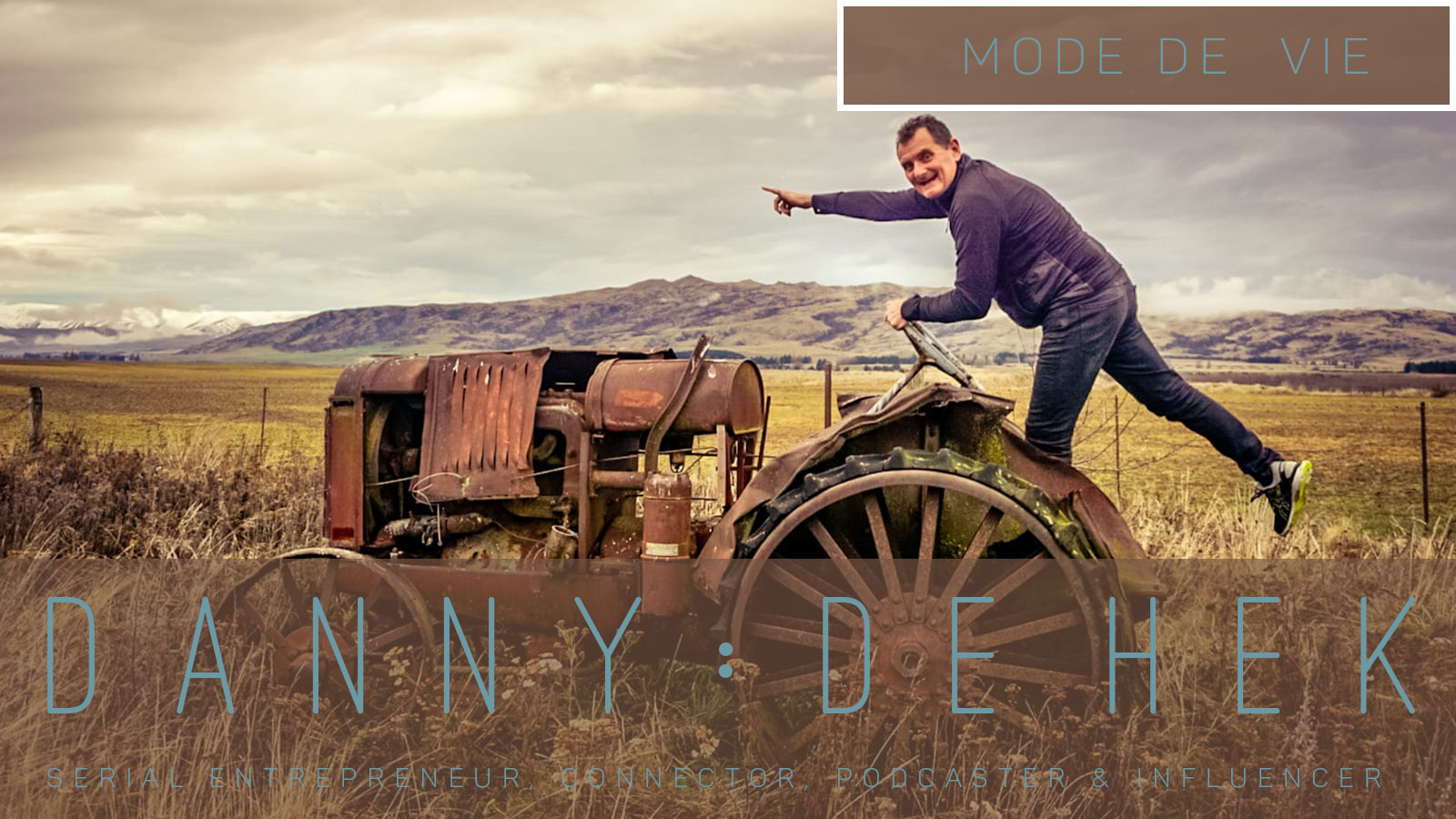
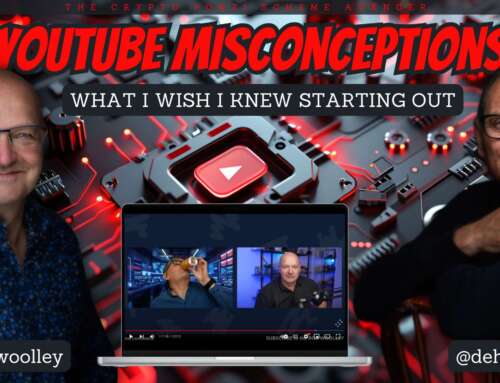
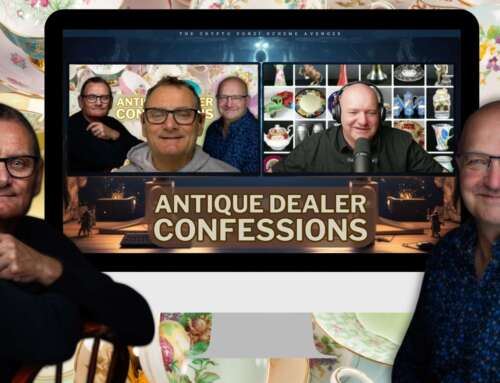


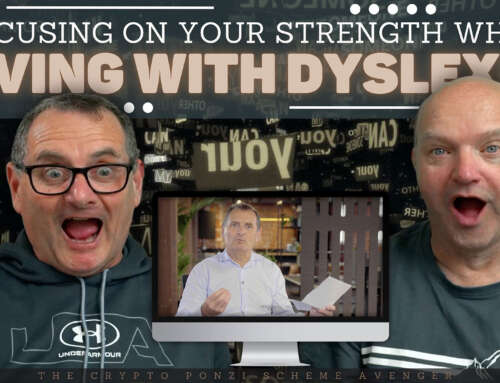
Leave A Comment